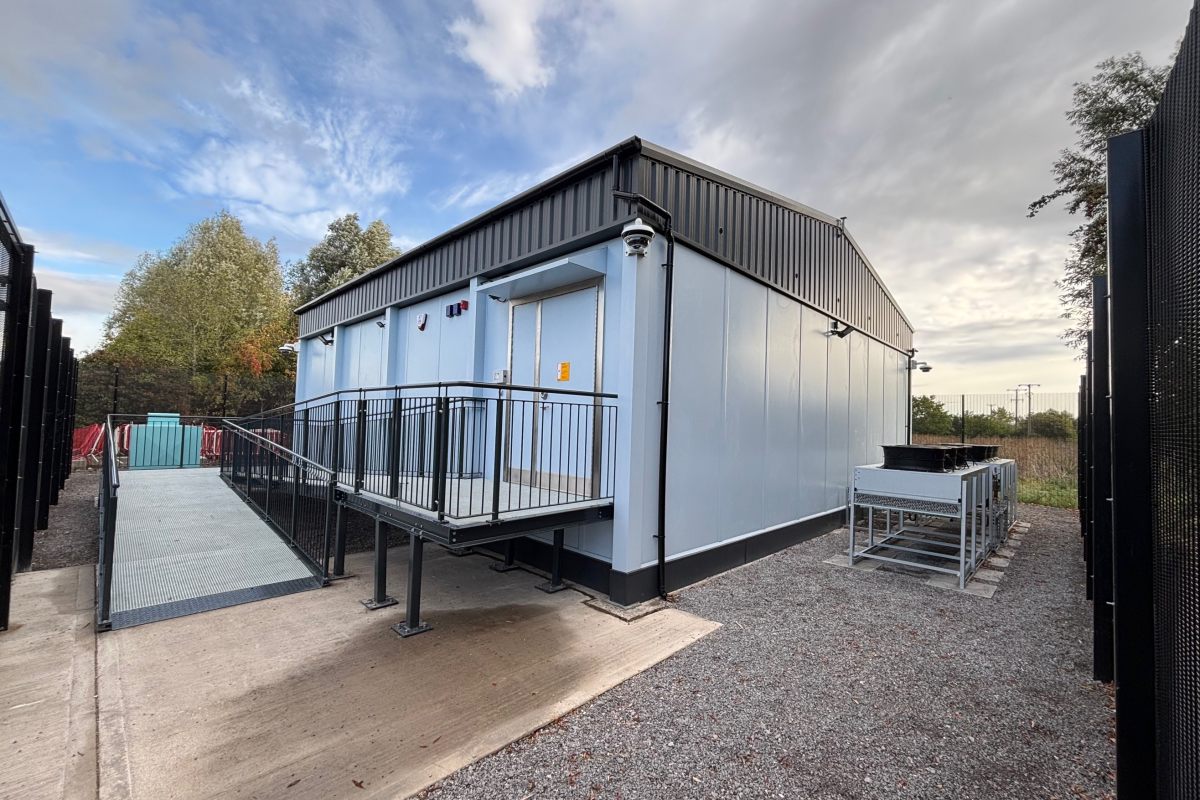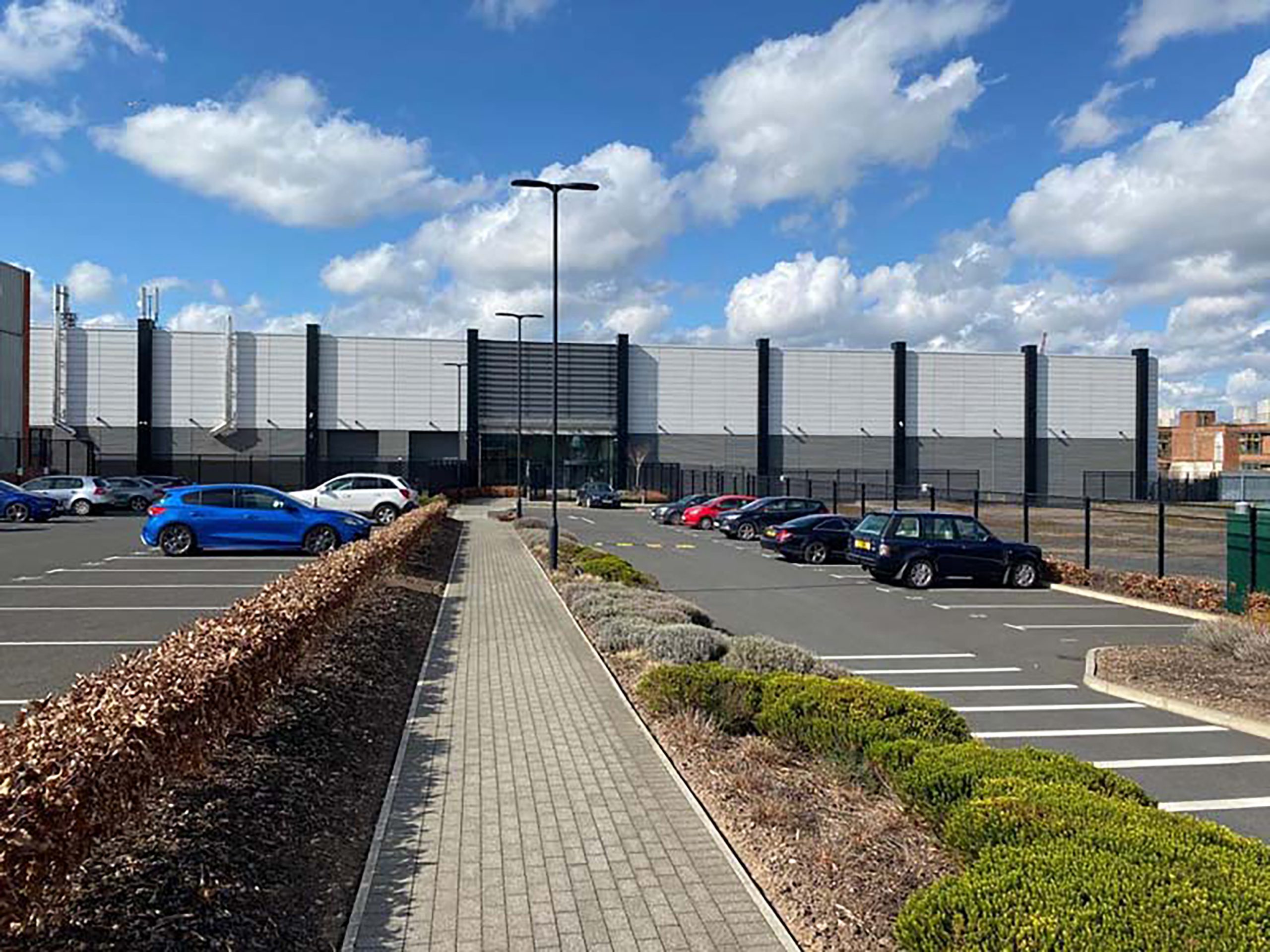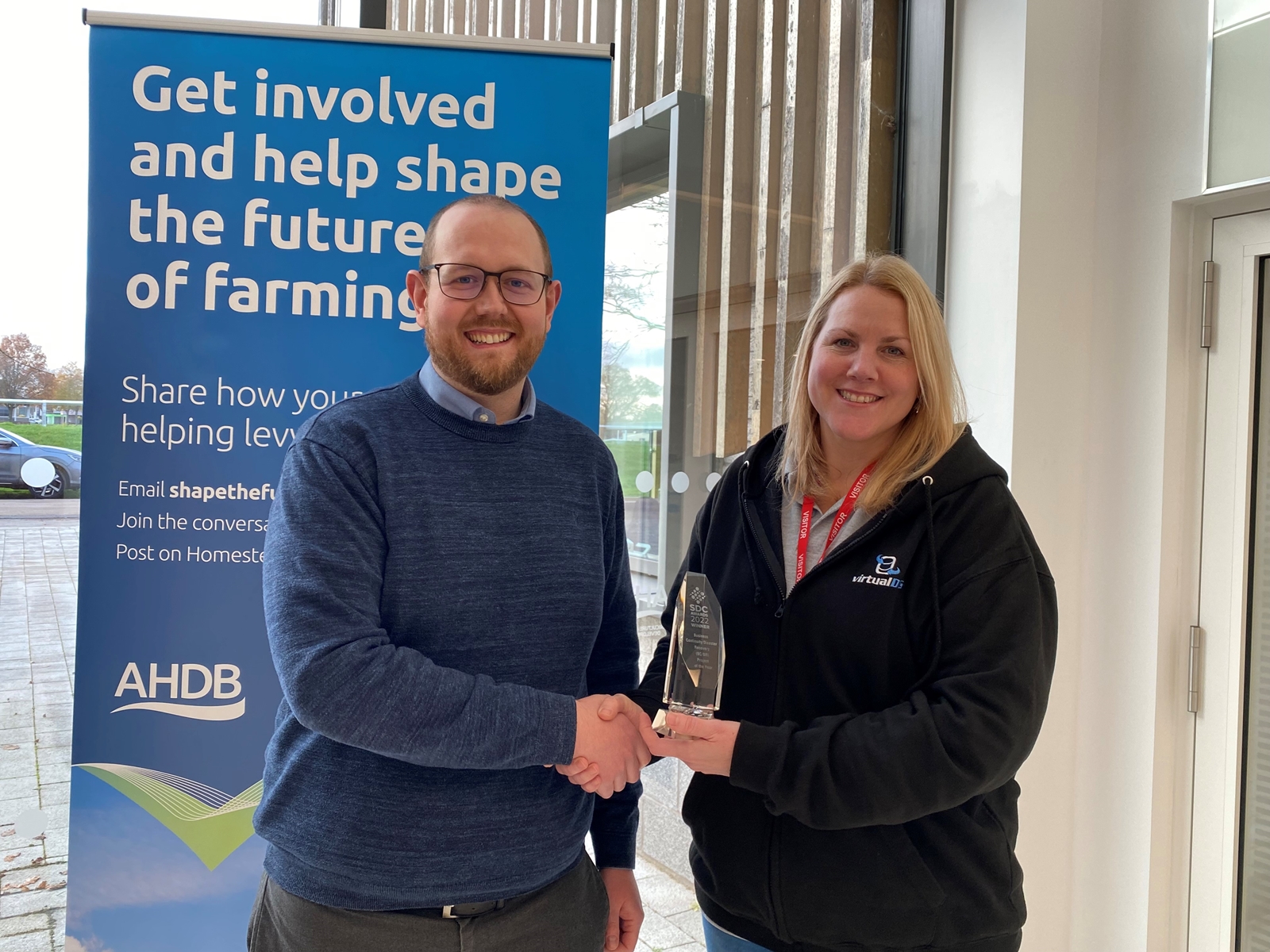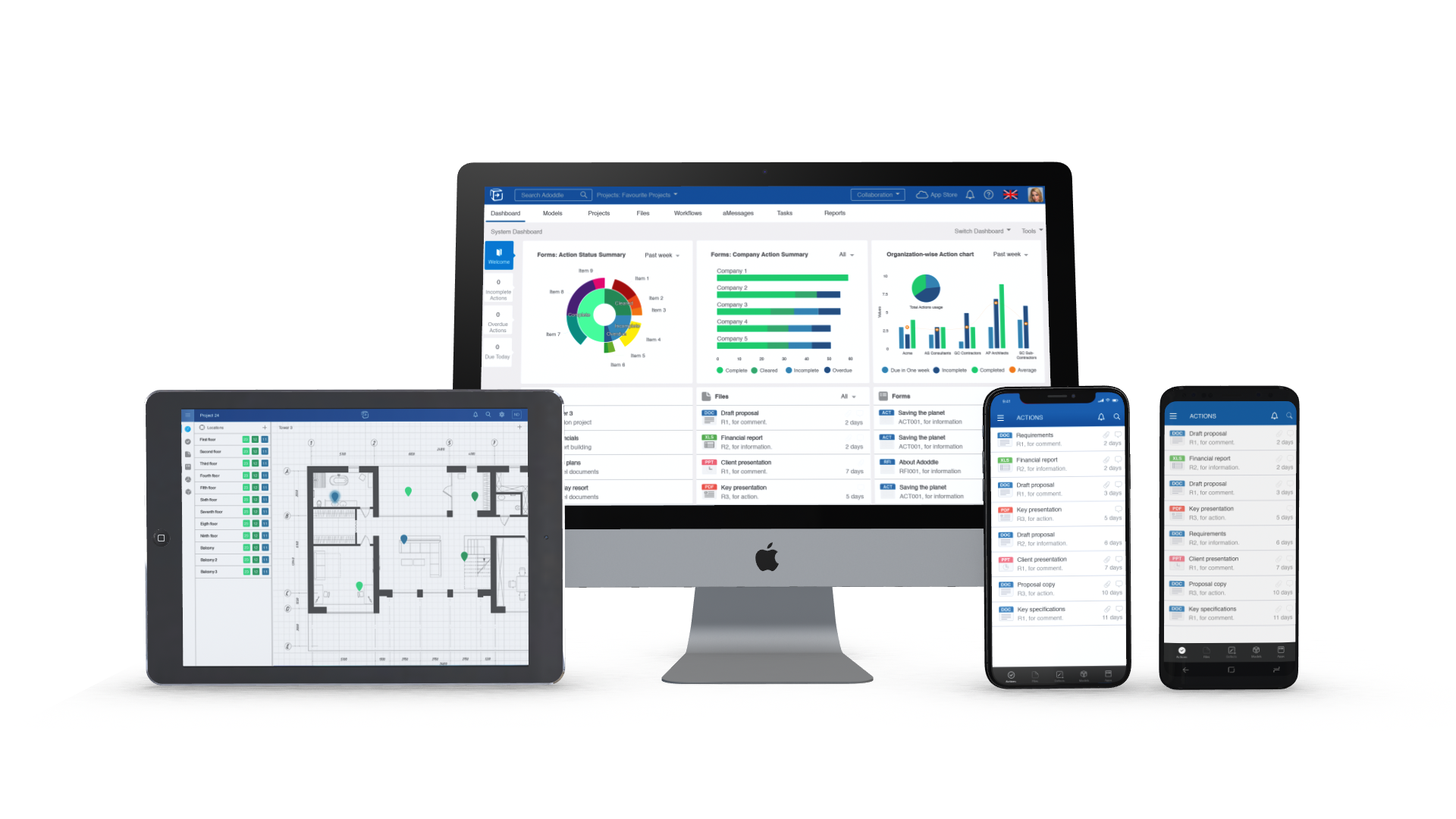Essential Disaster Recovery News for Data Centres
Data Centre Operations: Optimising Infrastructure for Performance and Reliability
Data Centre Security: Protecting Infrastructure from Physical and Cyber Threats
Essential Disaster Recovery News for Data Centres
Modular Data Centres in the UK: Scalable, Smart Infrastructure
Secure I.T. constructs modular DC for NHS Trust
Secure I.T. Environments (SITE), a UK design and build company for modular, containerised, and micro data centres, has today announced the handover of its latest external modular data centre project with Somerset NHS Foundation Trust.
The new 125m² data centre has now been completed and provides an energy-efficient disaster recovery facility for the Trust, ensuring it can continue to deliver resilient services across Somerset and for the 1.7 million patient contacts that take place.
A data centre for all challenges
Whilst the Trust initially considered cloud solutions for its data requirements, these could not meet the requirements for existing clinical software, nor the cost constraints in place.
In response, SITE proposed its external modular data centre, which is intended to provide a cost-effective and secure way to build new data centres or extend existing infrastructure to meet the growing demands of on-site IT needs.
SITE says its modular system can be built rapidly and that this particular project was designed, built, and live within 8 months.
The company also says its modular rooms are a pre-engineered solution, offering a clean and fast construction process, making it appropriate for locations where an existing room is not available or where a new building is impractical.
The modular system reportedly has high protection, including protecting against physical security threats by meeting industry standards BS476 / EN1047 and LPS1175 security ratings.
Design and delivery
The design was divided into three areas: the main IT racks, an electrical plant area, and build area.
Working with the Trust, SITE’s design incorporated 20 19” 48U cabinets, configured in two rows of 10 with cold aisle containment, energy-efficient UPS systems in N+1 format, as well as GEA Multi-DENCO Energy Efficient DX Freecool air conditioning units, also in N+1 configuration.
SITE managed the delivery of all groundworks and mechanical and electrical infrastructure.
The delivery of the new facility included a new concrete pad, drainage, power distribution, FK 5-1-12 fire suppression, VESDA detection systems, environmental monitoring, backup generator, and fuel tank.
Furthermore, the design and specification hardened the data centre against burglary (LPS 1175 SR2 specifications), fire, fire-fighting water, heat, humidity, gases, dust, debris, and unauthorised access.
The facility's external perimeter security has been protected with CCTV, prison mesh anti-climb fencing, security gates, and Amcor barriers.
Chris Wellfair, Projects Director at Secure I.T. Environments, comments, “At a time when many organisations are trying to balance the needs of their IT infrastructure with challenging budgets, our modular data centres are making it easier for them to achieve their goals without compromising on performance.
"Having previously built a data centre for the Trust at another hospital location, we were pleased to work with Somerset NHS Foundation Trust to deliver this new data centre to meet their specific requirements.”
Adam Morgan, Deputy Chief Technology Officer at Somerset NHS Foundation Trust, adds, “Secure I.T. have delivered a significant upgrade to the Trust’s data centre infrastructure.
"We were very specific about the design brief and requirements, and it has been a positive project delivering this facility with Secure I.T. Environments.
"The Trust now has additional capacity for growth for years to come, which will bring benefits to clinical care by enabling resilient delivery of clinical systems across the county of Somerset.”
For more from Secure I.T. Environments, click here.
Joe Peck - 18 November 2025
Data Centres
Essential Disaster Recovery News for Data Centres
News
Host-IT keeps the wheels turning at logistics software firm
Host-IT has announced its Birmingham colocation data centre has been selected by Tamworth based, tmWare, for hosting its Disaster Recovery (DR) systems.
This follows a review by the warehouse management and transportation logistics solutions specialist of its current and future IT needs. The migration of tmWare’s DR backup systems from its in-house location to a more secure and modern data centre environment was seen as a major priority. Host-IT’s Birmingham-based data centre will now support tmWare’s main IT stack, which has been located at Host-IT’s Milton Keynes colocation facility since 2016.
“Previously we’ve always hosted our DR in-house but based on our positive experience with Host-IT in Milton Keynes, the relocating of our eight DR server systems and back UPS to their Birmingham facility made a potentially hard decision a lot easier,” says Kieron Coughlin, Technical Director, tmWare. “Our DR equipment at Host-IT Birmingham will be connected by a high-speed fibre network to our Tamworth office and their Milton Keynes data centre.”
With thousands of pounds of business at stake with every order fulfilment and delivery, tmWare is mission critical to the performance of its logistics customers. These are reassured by tmWare’s strategic investment in the services of professionally run, highly resilient and secure colocation data centres.
“In the seven years since entrusting tmWare to Host-IT, we have enjoyed a highly professional and personalised service as well as an excellent uptime record,” says tmWare’s Managing Director, Lyndsey Phillips. “Their consistently excellent service and ability to support our current and future needs in a timely manner gives us every confidence as we look to expand our customer base. Equally, in ensuring the high levels of trusted IT delivery we provide to our existing valued customers.”
Host-IT’s secure ISO 27001, Tier 3 Birmingham facility is centrally located close to the major fibre networks traversing the UK and various regional fibre providers. There is currently 6MW of IT power available to site with the potential to increase this to 12MW.
Isha Jain - 23 January 2024
Data Centre Security: Protecting Infrastructure from Physical and Cyber Threats
Data Centres
Essential Disaster Recovery News for Data Centres
News
Scalable Network Attached Solutions for Modern Infrastructure
BlueHat Cyber improves data centres with Tintri solutions
Tintri has announced that BlueHat Cyber has implemented Tintri’s VMstore solutions as the backbone of its Infrastructure as a Service (IaaS) and Disaster Recovery as a Service (DRaaS) business. Its technology allows BlueHat Cyber to offload time-consuming administrative storage tasks and replicate across data centres, so it can focus on providing its clients with premium service.
BlueHat Cyber offers a cyber security portfolio and assists in planning, design, integration, operation, and optimisation of organisations’ IT security requirements. It needed a solution to simplify storage management, improve I/O and replicate workloads across multiple data centres, and chose Tintri VMstore as the solution for its benefits with fast asynchronous replication, increased uptime and performance, and ‘set it and forget it’ operations.
Now, BlueHat Cyber’s US Virtual Data Centre is running on 100% Tintri VM-aware technology because it is a purpose-built solution to store and manage virtualised workloads in enterprise data centres.
“We went from spending eight to 10 hours a week managing storage to maybe taking a glance at it once in a blue moon. We basically set it and forget it. When looking at a new client proposal, we consider if we have the capacity to take it on, but we never have to think about I/O performance, regardless of how intense the workload,” says Tim Averill, CTO, BlueHat Cyber.
“The key to a simple and successful hybrid cloud deployment is the use of best-of-breed technologies and industry best practices along with the support from an experienced MSP partner who can make the most cost-effective and future-proof recommendations, allowing your infrastructure to grow with your business,” says Brock Mowry, CTO, Tintri. “We are proud to see Tintri VMstore deliver on simplified and worry-free data management as it has proven to do for BlueHat Cyber.”
Isha Jain - 16 June 2023
Cyber Security Insights for Resilient Digital Defence
Data Centre Security: Protecting Infrastructure from Physical and Cyber Threats
Essential Disaster Recovery News for Data Centres
The Agriculture and Horticulture Development Board takes its disaster recovery to pastures new
The Agriculture and Horticulture Development Board (AHDB) has planted an advanced and robust IT disaster recovery (DR) systems in its Warwickshire headquarters, after appointing virtualDCS to design, implement and manage the solution.
The innovative system has been named the Business Continuity/Disaster Recovery (BC/DR) Project of the Year at the 2022 Storage, Digitalisation and Cloud (SDC) Awards.
The AHDB is a statutory levy board, funded by farmers, growers, and others in the food supply chain to help the industry succeed in a rapidly changing world. The organisation’s aim is to create a world-class food and farming industry in the UK.
Jamie Blakeman, IT Support Manager at AHDB, explains, “When it came to procuring a new disaster recovery solution, we knew we wanted a robust DR plan, with a system that would offer minimal recovery point objectives (RPOs) and recovery time objectives (RTOs), as well as using some of the best technology available. Ultimately, being able to access our data quickly and easily, and under any circumstances, was a key requirement.
“Potential suppliers were sought through G-Cloud, which is the government framework that enables the public sector to procure IT services via the Digital Marketplace. virtualDCS was selected because the company could provide a robust DR solution, with very low RPOs, through its single CloudCover service.
“The new system was up and running in a matter of weeks. After the hardware racking was completed and software was installed, most of the installation and configuration was done remotely and the longest part was synchronising the data.
“Our old solution was a dated product as well as being difficult and complicated to use. Now we know that data, files and systems can be quickly restored.”
Kerri Milburn, Project Delivery Specialist at virtualDCS, says, “To win an award for this bespoke and innovative solution is a huge coup for everyone involved, as well as reinforcing to AHDB how robust the system is.
“The challenge of protecting data has never been greater, with it held in local sites, on public clouds and SaaS solutions. This project was novel as AHDB wanted to protect backup data and provide DR for these scenarios, but they didn’t want their protection on the public cloud.
“In addition, it needed to be a secure and disaster proof backup and recovery system that offered native, near-time replication, as well as being easy to use, meaning in the event of an incident, they have the freedom and autonomy to immediately invoke it themselves.
“Our CloudCover solution allows them to protect and replicate their data from on-premise and Azure servers, as well as Microsoft 365. It offers full backups and near real-time failover of their systems, as well as protecting against ransomware and other cyber nasties.
“By bringing top-tier applications together, we can provide fast and reliable offsite protection. The solution protects both the onsite and public cloud workloads to the DR site in question, across different locations with ease, as well as providing the desired RPOs and RTOs. This gives AHDB peace of mind that they can failover to replica virtual machines on our platform with minimal user interruption.”
Beatrice - 11 January 2023
Data Centre Operations: Optimising Infrastructure for Performance and Reliability
Data Centre Security: Protecting Infrastructure from Physical and Cyber Threats
Essential Disaster Recovery News for Data Centres
News
News in Cloud Computing & Data Storage
World Backup Day is here again – but why are we still celebrating it?
By Chris Addis, Vice President of Sales in the UK and EMEA at Nasuni.
The days of traditional file backup will soon be long gone; that is why we called for an end to World Back Up Day 10 years ago. Should we also be celebrating other archaic technologies on “World Floppy Disk Day” or ‘‘World Fax Day’’? A ‘realistic’ celebration party for backup would probably entail starting a few hours or days later than planned, and the cake would have a few slices missing! The vast majority of IT professionals we talk to want to get rid of backup and its associated headaches and challenges.
Even in the age of cloud, cyber security threats associated with data such as ransomware are becoming more severe and frequent (one happening every 11 seconds), forcing businesses to think differently about their data infrastructure and give more consideration to disaster recovery plans. Traditional backup technology is evolving, but even cloud solutions have major flaws.
The challenges don’t end there. While centralised enterprise backup systems can ingest unstructured data from dozens or hundreds of sites, they typically utilise central media servers that dedupe and compress the data. When a single site goes down, that backup server can restore the data and access within a business day or so. But if an event impact’s multiple locations, the central backup server can only manage a couple location restores at a time, meaning that time to recover (RTO) can easily increase from a few hours to multiple days, even weeks.
That’s why we’ve created a cost-efficient cloud replacement for traditional network attached storage (NAS) and file server silos, consolidating file data in easily expandable cloud object storage. This way, enterprises can restore millions of lost files or folders in under a minute. Many of our customers across industries end up coming to us simply because they’re fed up with their backup and the ‘unglamourous’ work that is required for it – by leveraging file data services they can eliminate the need for complex legacy file backup and disaster recovery infrastructure.
Beatrice - 29 March 2022
Data Centre Security: Protecting Infrastructure from Physical and Cyber Threats
Essential Disaster Recovery News for Data Centres
News
UK government’s CyDR team award Asite with top security accreditation
Asite has become one of the only software platforms to achieve a prestigious accreditation issued by the Cyber Defence and Risk (CyDR) team.
The accreditation enables Ministry of Defence (MoD) data at the ‘Official Tier’ to be stored and processed with an acceptable level of risk, providing organisations in the construction industry with the highest level of security for their data. This includes Laing O'Rourke, Transport for London, Environment Agency, and Berkeley Homes - to name a few.
In 2017, an industry security notice was released detailing security accreditation requirements that shall always be applied for every industry-owned Information and Communications Technology (ICT) system that stores, processes, or generates MOD data.
CyDR is the sponsor of the accreditation process for MOD, providing support and advice and overseeing accreditation activity across defence.
All requests to accredit ICT are processed through the Defence Assurance Risk Tool (DART), which was introduced to provide the MOD with a mature understanding of the ICT security risks across the department and its industry partners through the information input onto DART by companies and organisations.
Following a detailed review by the CyDR team, Asite has satisfied all security requirements to store and process MoD data. This includes:
Annual IT health check, which includes internal and external skilled 3rd party penetration testingAlignment with current National Cyber Security Centre (NCSC) Cloud Principles. The 14 principles have been made to align ISO 27017 to ensure protection to cloud customersAnnual review, including verification that all the conditions of the accreditation continue to be met.
Speaking on the announcement, Chris Cannings, Chief Information Security Officer at Asite says: “This accreditation is another string in the bow of Asite. It demonstrates our cyber security maturity as an organisation and our commitment to protecting our customer’s data. As Asite continues to grow and develop its capabilities, we intend to keep leading the way in our approach to protecting our customers and our platform.”
The accreditation enables Asite to manage MOD data through its cloud platform, including the handling of data at ‘Official Tier’.
The Asite platform provides customers with a robust cloud system for document management that features top-level security functions, including comprehensive access controls and full audit logging.
Customers can control access to certain documentation by assigning user roles and privileges. In addition, the platform showcases an extensive audit trail; a record of all documents created or modified by different users is maintained on the system, ensuring Information is safe from accidental deletion.
Beatrice - 23 March 2022
Data Centre Security: Protecting Infrastructure from Physical and Cyber Threats
Data Centres
Essential Disaster Recovery News for Data Centres
Datacentres and Disaster Recovery: Tape or Cloud backup?
During the COVID-19 pandemic, hackers and fraudsters have been extremely active. During the first half of 2020, stimulated by the fact that more people began to work remotely from home, Bitdefender's Mid-Year Threat Landscape Report 2020 claims there was a 715% year-on-year increase in detected – and blocked – ransomware attacks. No organisation, no datacentre, or state is immune to the attacks, which are constantly evolving, and for the cyber-criminals that perpetrate them, they can be rewarding.
Not quite so perhaps with the
recent attacks on the Republic of Ireland’s healthcare system. An Irish
minister has described it as being “possibly the most significant cyber-crime
attack on the Irish state” to date, and yet, its government is steadfastly
standing firm and refusing to pay a ransom after consulting cyber-security
experts. Taoiseach (Irish PM) Micheál Martin has also stressed that the
country’s health and emergency services remain open. Nevertheless, he admits
that it may take some days to fully assess the impact of the ransomware attacks
on the HSE, the country’s health service.
BBC News reports: “The National
Cyber Security Centre (NCSC) has said the HSE became aware of a significant
ransomware attack on some of its systems in the early hours of Friday morning
and the NCSC was informed of the issue and immediately activated
its crisis response plan.”
The international attack caused
widespread disruption in many of the Republic of Ireland’s hospitals, including
at Dublin’s Rotunda Hospital. It had to cancel outpatient appointments, with
the exception of women in their 36th week of pregnancy or later. All
other gynaecology clinics were cancelled, but those with urgent concerns were
encouraged to attend. The National
Maternity Hospital in Dublin also reported significant disruption to its
services on the date of the attack, 14th May 2021.
Hospitals, such as St
Columcille's Hospital in Dublin, Children's Health Ireland (CHI) at Crumlin
Hospital, and the UL Hospitals Group - which consists of six hospital sites in
the mid-west – advise their patients of the disruption to even virtual online
appointments and any matters related to electronic records. This disruption is
causing significant delays in patient-related healthcare services and
appointments.
HSE chief executive, Paul Reid,
says the attack is focused on accessing data stored on central servers. BBC
News adds: “Rotunda Hospital Master Professor Fergal Malone said they had
discovered during the night that they were victims of the ransomware attack,
which is affecting all of its electronic systems and records. Prof Malone said
he believed it could also have affected other hospitals, which was why they had
shut down all of their computer systems.”
Human-operated ransomware
ZDNet reports: “The attack was
identified as a human-operated ransomware variant known as "Conti", which has been on the rise in recent months.”
Daphne Leprince-Ringuet explains in her article for the publication: “Conti
operates on the basis of "double extortion" attacks, which means that
attackers threaten to release information stolen from the victims if they
refuse to pay the ransom. The idea is to push the threat of data exposure to
further blackmail victims into meeting hackers' demands.”
Rather than give in to the
cyber-criminals, the NCSC has decided upon a remediation strategy. This
involves isolating the systems that were hacked, perhaps by providing an air
gap to ensure that no other systems can be infected with ransomware viruses.
They then plan to wipe, rebuild and update all of the infected devices. The HSE
will then work with its anti-virus software partners to ensure that their
anti-virus solutions are updated and that all infected devices are thoroughly
cleaned before they use remote back-ups to restore the systems safely.
Leprince-Ringuet adds: “The HSE
has confirmed that it is in the process of assessing up to 2,000 patient-facing
IT systems, which each include multiple servers and devices, to enable recovery
in a controlled way. There are 80,000 HSE devices to be checked before they can
be brought back online. Priority is given to key patient care systems,
including diagnostic imaging, laboratory systems and radiation oncology, and
some systems have already been recovered.”
Regulatory compliance
There is also a requirement under
the European Union’s General Data Protection Regulations (GDPR) to ensure that
sensitive personal data is secured. A data leak can lead to severe financial
penalties – not just a disruption in service delivery. The precautions taken by
the HSE, the NCSC and their partners are therefore sensible, albeit perhaps
drastic and highly disruptive. Prevention is often better than a cure, but
hackers are becoming more and more sophisticated in how they carry out their
attacks. The initial weakest link is often not an organisation’s technology,
but their workforce who can unwittingly begin an attack by clicking on, for
example, a phishing email link.
Jim McGann, VP Marketing &
Business Development at Index Engines, offers his thoughts on the regulations:
“GDPR puts personal data back in the hands of the citizens. So, if you have a
company doing business in the EU, including from the US, you have to comply.”
He adds that GDPR raises a key problem that organisations have with data
management. Quite often, they find it hard to locate the personal data on their
systems or in their paper records. Subsequently, they can’t know whether the
data needs to be kept, deleted, modified or rectified. So, with the potentially
enormous fines looming over their heads, GDPR will place a new level of
responsibility on their shoulders.
However, he says there is still a
solution: “We provide information management solutions; the ability to apply
polices to ensure compliance to data protection regulations. Petabytes of data
has been collated, but organisations have no real understanding of what data exists.
Index Engines provides the knowledge of this data, by looking at the different
sources to understand what can be purged. Many organisations can free up 30% of
their data, and this allows them to manage their data more effectively. Once
organisations can manage the content - the data - they can then put the
policies around it, as most companies know what type of files contain personal
data.
He then explains: “Much of this
is very sensitive and so few companies like to talk on the record about this, but
we do a lot of work with legal advisory firms to enable organisations with
their compliance.” Index Engines, for example, completed some work with a
Fortune 500 electronics manufacturer that found that 40% of its data no longer
contained any business value. So, the company decided to purge it from its
datacentre.
So, there is a need to train
staff to prevent ransomware attacks, and to have the ability to back-up or
restore and source data quickly. It’s also imperative to air gap sensitive data
to ensure service continuity – perhaps to the cloud with backup-as-a-service
(BUaaS), or to tape. Most people would be forgiven for thinking that tape is an
old and no longer used technology, but it still plays a crucial role in storing
and backing up data. After all, cloud systems can themselves be prone to
attack, and so it’s sensible to have more than one means of backing up data.
Tape back-up
Chris Ducker, Head of Product
Marketing at Orgvue, and a former head of proposition marketing (Europe) at
Sungard Availability Services, commented a couple of years ago: “If you look at
on-premise, you have tape back-ups, a large IT infrastructure in place and that
would be backed up onto tape or other services in a datacentre. This then gets
stored in a safe location and then, when an incident occurs, you have to move
it physically and get them to the right location to load them and get them up
and running. This is a much slower process than cloud recovery provides. If you
have a replicated environment, you can spin up servers more quickly than with
traditional back-up.”
He says certain environments can
be mirrored for business-critical applications using cloud services. However,
there will be applications for which it might be more efficient to use
traditional tape back-up and so tiering defines the activity that you do. In
his view, it’s important to avoid being blinkered by any assumption that cloud
recovery is the only option.
Cloud recovery and cloud storage
more widely is part of a mix of options, and so there is a need to understand
the business outcomes an organisation wants to achieve, and why there might be
a need for the recovery to ensure that the right solutions are put in place to
maintain data security, data integrity, business and service continuity.
Where once there used to be the
rule that said you need 3 copies to ensure you can guarantee recovery of your
data, the industry has now adopted the 3-2-1 rule. Although commonly known in
industry, Carbonite advises on its website:
1. Keep at least three copies of
your data. That includes the original copy and at least two backups.
2. Keep the backed-up data on two
different storage types. The chances of having two failures of the same storage
type are much better than for two completely different types of storage.
Therefore, if you have data stored on an internal hard drive, make sure you
have a secondary storage type, such as external or removable storage, or the
cloud.
3. Keep at least one copy of the
data offsite. Even if you have two copies on two separate storage types but
both are stored onsite, a local disaster could wipe out both of them. Keep a
third copy in an offsite location, like the cloud.
In response, Trossell comments: “With WAN Acceleration you
can have three different copies on two different types of media in two
locations. The different media types could be cloud and tape. You can have an
onsite copy too, offering better resilience.”
Exponential data volumes
The trouble is that data volumes
are increasing exponentially – and this can become a major issue, whether an
organisation is backing up their data, restoring it after a ransomware attack
or doing it for indexing purposes to comply with regulations, such as GDPR. There
still works as a solution. It’s not WAN Optimisation, which can’t handle
encrypted data, and it’s not SD-WANs on their own.
Even SD-WANs are boosted with a
WAN Acceleration overlay with solutions, such as Bridgeworks PORTrockIT, which
using a combination of artificial intelligence, machine learning and data
parallelisation to accelerate data over wide area networks – and it can handle
encrypted data to the cloud and for transfer to tape. WAN Acceleration mitigate
latency and packet loss, while increasing bandwidth utilisation. Even
government agencies need to be able to deliver.
As mentioned above, the
additional challenge is to meet the increasing number of regulatory requirements,
including data protection and data management over a WAN. One such organisation
- a US government agency - approached Bridgeworks, in 2017, to undertake a
proof of concept (POC) using multiple 10Gb/s WAN connections. This was with the
aim of enabling high speed data transfer between its North-West and North-East
coast US-based datacentres.
With accelerated WAN links, this
US government agency hopes to replace its reliance on local tape back-up. The
results of the POC eliminated the need for tape back-ups in the North-West
datacentre, and brought the potential for significant cost-savings, achieved by
gaining ‘almost local area network (LAN) performance’ over 2,500 miles between
the two datacentres. This was done leveraging solutions like Commvault, NetApp
SnapMirror and cloud-integrated StorageGrid, achieved with PORTrockIT.
A senior enterprise engineer at
the agency comments: “The networking team were extremely impressed with the
ability to throttle bandwidth consumption. We started low and reached our
initial target of 600MB/s of throughput on the initial learning process without
any impact on other traffic using the same WAN link.”
Petabyte scale movements
PORTrockIT has now been
accelerating the US government agency’s WANs for a few years now, and the final
implementation enabled the agency to realise the plan to move away from local
tape back-up, resulting in significant cost savings. Data is now moved at a
petabyte scale and at great speed.
By delivering 90-95% utilisation of the allocated 10Gb/s WAN bandwidth over 24 hours a day, 7 days a week and over the entire course of a year, the agency was also able to gain a significant return on investment on the cost of the WAN links themselves. This was in addition to the massive acceleration of the transferred data. This would be crucial in the event of any recovery from a ransomware attack, and it can accelerate real-time analysis as well as Backup-as-a-Service.
While the US agency moved away from its local tape back-ups to the cloud, there is still a role for tape back-ups for disaster recovery and for regulatory compliance. A combination of solutions can be deployed, as suggested by Ducker, to ensure that data is kept secure and readily available for whenever it is needed – even after a ransomware attack. The key is to be ready for any potential eventuality to ensure that, for example, a healthcare system can continue to operate to deliver healthcare services to its patients and to support its staff.
By Graham Jarvis, Freelance Business and Technology Journalist
Beatrice - 7 June 2021
Data
Data Centre Security: Protecting Infrastructure from Physical and Cyber Threats
Essential Disaster Recovery News for Data Centres
News
Zerto continues expansion of data protection and disaster recovery
Zerto has announced positive growth and cloud technology trends among its customer base for the second half of 2020. Across 13 industries, Zerto’s customers continued their expansion of data protection (DP) and disaster recovery (DR)-to-cloud technology with the adoption of Microsoft Azure, Google Cloud, AWS, and IBM Cloud.
Global footprint grows
In the global healthcare industry, Zerto expanded its customer base by 100% and doubled its global healthcare business in the second half of 2020. Additionally, Zerto experienced a 100% increase in size of customer project implementation in the global public sector. In EMEA specifically, Zerto experienced a 300% spike in the size of project implementations in the public sector.
Additional key growth highlights include:
New customers in the computers and electronics industry increased by 85%.New customers in the business and consulting industry also increased by 300%. New customers in the federal government, business, and consulting services industries increased by more than 40%.New customers across the manufacturing, software, internet, and telecommunications industries increased by more than 10%.The average project implementation size increased by 200% in the legal industry.
Innovation in the cloud
Zerto customers continued to expand their DP and DR-to-cloud
adoption with public cloud providers that included AWS, Azure, IBM Cloud, and
Google Cloud. Zerto announced a key cloud partnership with Google in 2H 2020
and added new cloud advancements such as VMware on public cloud DR and DP for Microsoft
Azure VMware Solution, Google Cloud VMware Engine, and the Oracle Cloud VMware
Solution. Key highlights include:
Zerto increased its footprint for DR-to-cloud engagements by nearly 100%.Zerto was also recognised for its innovation in the cloud through numerous accolades that included DCIG’s TOP 5 Azure Backup report, TMCnet’s 2020 Cloud Computing Backup and Disaster Recovery award, CRN’s Coolest Cloud Company for 2021 recognition, as well as being named a 2021 Gartner Peer Insights Customers’ Choice for Data Center Backup and Recovery Solutions.Zerto published new guidance for customers on how to use Google Cloud VMware Engine for DR and How to Deploy & Configure Zerto Long-term Retention with Amazon S3.
Customer successes and wins
In the 2H 2020,
Zerto customers continued to build resilience and achieve results across
multiple sectors and use cases:
Grey County, which covers nine municipalities in south-eastern Ontario, chose Zerto and Microsoft Azure to ensure continuous availability for critical services like ambulances and long-term care life safety systems even if disaster struck. To learn more, read the Grey County case study here. One of the world’s largest insurance companies chose Zerto to protect its critical workloads in the cloud. To learn more, read the case study here.New North American customers using Zerto include Atlantic Constructors; Boston Medical Center; City of Georgetown, TX; Epiq Global; Fairfax County, VA; and Washington County, TX.New EMEA customers and partners include Guy's and St Thomas' NHS Foundation Trust; Merseyside Police; and SLTN.
“Expanding our footprint across these industries speaks to the power and innovation behind the Zerto platform for cloud data management and protection,” says Ziv Kedem, CEO and co-founder, Zerto. “We’re excited to see momentum in the healthcare and public sectors as some of the most respected names around the globe realise that leveraging the cloud for disaster recovery and data protection is critical now more than ever for protecting patients and citizens alike, and it’s simply more efficient.”
“As a leader in long-term healthcare in the South East for more than 50 years, we have extremely high expectations to keep everything available at all times in order to serve our 24,000 patients,” comments Rich Bailey, VP of IT operations, PruittHealth. “After experiencing growth, we determined that a DR-to-cloud strategy with Zerto and Azure would be simpler and more efficient than our previous solution. Since using Zerto, we’ve improved efficiencies that include reducing time required for DR testing and reducing man hours spent on near-daily maintenance and operations.”
“Government organisations like ours are often stretched thin, and each agency consists of a lot of small businesses in a sense,” says Evan Davis, technology and infrastructure manager, Grey County. “Zerto and Azure met all of our varied, demanding requirements. They just work together seamlessly for protection.”
Beatrice - 5 March 2021
Enterprise Network Infrastructure: Design, Performance & Security
Essential Disaster Recovery News for Data Centres
News in Cloud Computing & Data Storage
Taeknizon chooses Neutrality.one to connect Cloud Deployments
Neutrality.one has been selected by Taeknizon to connect its cloud services with software-defined wide-area networking (SDWAN). The solution enables enterprises to enhance their Multiprotocol Label Switching (MPLS) services and evolve towards internet and private cloud architecture.
Taeknizon’s
customers benefit from greater visibility and control over their operations by
gaining the ability to connect to the cloud with secure and high-performance
networking. neutrality.one will provide Taeknizon with SDWAN underlay and
overlay services to enable an end-to-end experience from the edge to the
cloud. The solution supports users as they seamlessly migrate from
traditional on premises services or public cloud to private cloud
infrastructure.
“The rapid adoption of cloud services across Asia-Pac and the Middle East is driving demand for elastic, scalable and secure networking. Enterprises across these regions accelerated cloud adoption in 2020 and in 2021 they’re recognizing the benefits of going beyond MPLS and adopting SDWAN. Our goal is to make that migration as simple and seamless as possible,” comments George Szlosarek, CEO at neutrality.one. “Together with Taeknizon, we’re helping enterprises to maximize the potential of the cloud and remove any limits on their agility and scalability. They benefit from a smooth transition to SDWAN that underpins cloud-first strategies.”
Taeknizon
is a fast-growing private cloud service company headquartered in Singapore with
operations and infrastructure in UAE, Qatar, KSA, Bahrain, Kuwait, Oman, India
and the US. Taeknzion’s Taekni Cloud offers a variety of services via its
private cloud offerings such as Infrastructure as a Service (IaaS), Backup as a
Service (BaaS), Disaster Recovery as a Service (DRaaS), Security as a Service
(SECaaS). In addition, Taeknizon’s
services cover cyber security solutions, consultancy and data center solutions.
Taeknizon’s zero CAPEX pay as you go modeleliminates the need for CAPEX
investments, with a predictable monthly subscription cost to help customers
streamline their IT budgets. Taeknizon offers an integrated enterprise-risk management approach, with
agile and high-level resiliency, while balancing business service availability
requirements and risk tolerance.
“Growth in cloud adoption is matched with the need for a new networking model. Our enterprise customers want to connect and get the most out of their cloud deployments and SDWAN can be a big part of that. By working with neutrality.one, we’re expanding the solutions we can offer enterprise customers and offering them a flexible foundation for connecting their applications and services,” says Anithan Chandran, Chief Operating Officer at Taeknizon. “The team at neutrality.one are experts in networking the cloud and understand what it takes to deliver reliable, resilient and secure connectivity. We look forward to growing together and helping more enterprises make the move to the cloud.” Over the last 12 months, neutrality.one has been building out its global networking capabilities and partnering with world-leading software-defined networking providers. It has established a point of presence in datamena in Dubai and is efficiently scaling its operations locally and globally. It is dedicated to the acceleration of network transformation and maximizing the value of SDWAN for the enterprises in the Middle East and Asia-Pac.
Beatrice - 26 January 2021
Data Centre Security: Protecting Infrastructure from Physical and Cyber Threats
Enterprise Network Infrastructure: Design, Performance & Security
Essential Disaster Recovery News for Data Centres
News
News in Cloud Computing & Data Storage
RCP prescribes CloudCover 365 to cure backup ailments
The Royal College of Physicians (RCP) has taken the health and wellbeing of its Microsoft 365 data to the next level by enlisting CloudCover 365 to securely back up and protect its vital Microsoft 365 services across its entire IT system.
Founded in 1518
by a Royal Charter from King Henry VIII, the RCP is dedicated to improving the
practice of medicine and represents more than 39,000 doctors worldwide, as well
as hosting a vast library of medical texts. It is also home to the National
Guideline Centre (NGC), which develops guidelines and care standards within the NHS for healthcare
professionals, patients and carers.
The vast
organisation is home to approximately 150 servers, that power more than 650 desktop
computers and other devices, across a wide geographical area. The exploration
into CloudCover 365 was sparked when the RCP began migrating to Microsoft 365’s
mailbox services, which in turn resulted in the increased use of other aspects
of Microsoft 365, including SharePoint, Teams and OneDrive.
However, as the
RCP became more reliant on Microsoft 365, the IT team were increasingly concerned
with how the system was being backed up, which resulted in them exploring additional
safeguards. They approached Leeds based cloud computing and disaster recovery
specialist, virtualDCS, which is a Veeam Gold Partner, and already provides the
RCP with its Cloud Connect backup service.
It was
immediately obvious that virtualDCS’ recently launched CloudCover
365 service, powered by Veeam technology, would be a perfect fit. The product
incorporates data storage technology from Zadara and is now the world’s only
Veeam powered self-service Microsoft 365 portal, meaning individual end users can
view and restore their data, without specialist IT support.
Jim Anstiss, IT operations technical manager at the RCP, says: “Over the last 18 months we’ve become increasingly dependent on Microsoft 365 and the Covid-19 pandemic accelerated this further as lots of our teams and users started working remotely.
“This meant having a first-rate backup system was more important than ever. We looked at various options and specifically focussed on Veeam based solutions, the gold standard for backup and disaster recovery systems. After trialling CloudCover 365, we were in no doubt it was the right product for us. We particularly liked the straightforward setup and found the interface easy to use.”
Virtual DCS....
Photograph by Richard Walker/ImageNorth
Jim adds: “It also gives us confidence that CloudCover 365 is produced by virtualDCS. The company also provides our Veeam Cloud Connect solution, which we wouldn’t be without after we saw its intrinsic value when we needed to carry out a major restore, following a scheduled power outage across our entire system one weekend. After carrying out maintenance work, we powered up the system and were alerted to the fact that 70TB of data was no longer accessible, which could have had catastrophic consequences for our organisation.
“Their Cloud Connect team worked alongside
us overnight on a Sunday and 12 hours later, we had restored 75% of the data in
time for Monday morning, with the final parts back up and running by Wednesday,
which was a fantastic outcome and this is the level of service and dedication we
can expect from all virtualDCS services.”
Andrew Low, from virtualDCS, explains: “CloudCover 365 is increasingly being recognised as the go-to backup product for Microsoft 365 and we’re now successfully providing it to a vast range of organisations across the public and private sectors. These include well-known high-street retailers, national charities, further education colleges and oil companies as well as all types of SMEs.
“As well as offering a premium product
with high levels of functionality that is fully hosted and serviced in the UK,
our ability to tailor CloudCover 365 to each individual client, so it specifically
meets the requirements of their infrastructure and pain points, gives us a very
compelling offering.”
CloudCover 365 offers a wealth of additional features on top of the Veeam foundations that it is built on, as well as secure encryption and immutability. The product is also hosted in the UK, G-Cloud accredited and ISO27001 certified.
Beatrice - 5 January 2021

Head office & Accounts:
Suite 14, 6-8 Revenge Road, Lordswood
Kent ME5 8UD
T: +44 (0)1634 673163
F: +44 (0)1634 673173









